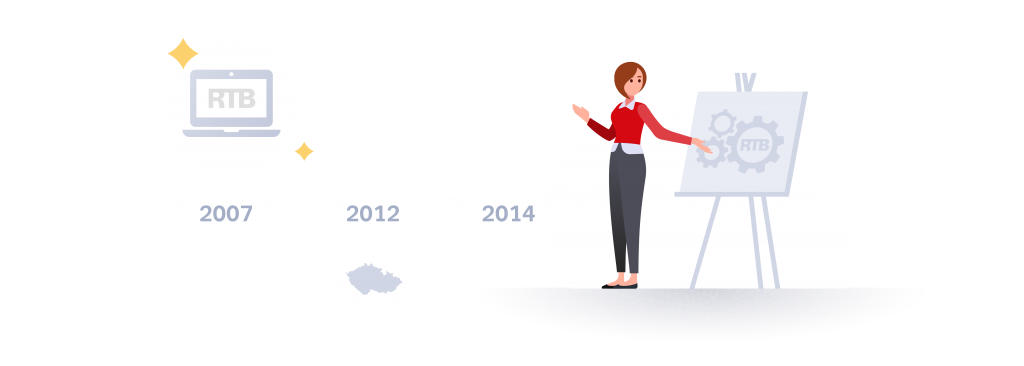How does RTB work?
Let’s take a look at how RTB works using the simple example of a dog owner.
RTB principles
RTB works simply based on two sides: supply and demand. On the supply side is the website owner (publisher) who offers their advertising space. On the other side is the company that demands advertising space (advertiser).
How do these sides communicate with each other in programmatic RTB buying?
The website owner connects their site to a Supply Side Platform (SSP), which serves to automatically offer advertising space for sale. The advertiser, on the other side, enters requirements for buying advertising space (desired websites, maximum amounts, etc.) into a Demand Side Platform (DSP). This serves for the automated buying of advertising space.
The SSP states the minimum price for which the publisher is currently willing to sell their advertising space. The DSP, on the other hand, states what price the advertiser is willing to pay for this space. The DSP that offers the highest amount (usually multiple advertisers have an interest in the same advertising space at the same time) wins the advertising space. This whole process is automatized without the need for any physical negotiation.

RTB in the world and on Seznam
RTB, or Real Time Bidding, was created in 2007 and in its early days primarily served to sell ad space that was not sold directly from salespeople. Over time, providers found that they could monetize their space for higher amounts that advertisers were willing to pay in exchange for automation, real-time optimization, and especially for targeting relevant target groups.
RTB came to the Czech Republic in 2012 and two years later Seznam also began to use it. Initially, we sold space through our first SSP, Admeta, and quickly switched to SSP PubMatic, which was joined by SSP Xandr (formerly known as AppNexus) in 2018. We still use both systems today.
In September 2017, we also launched our Adform DMP (Data Management Platform), which allows you to use our targeting. DMP serves to store cookies and segment them according to the common characteristics of their users such as gender, age and interest in buying.